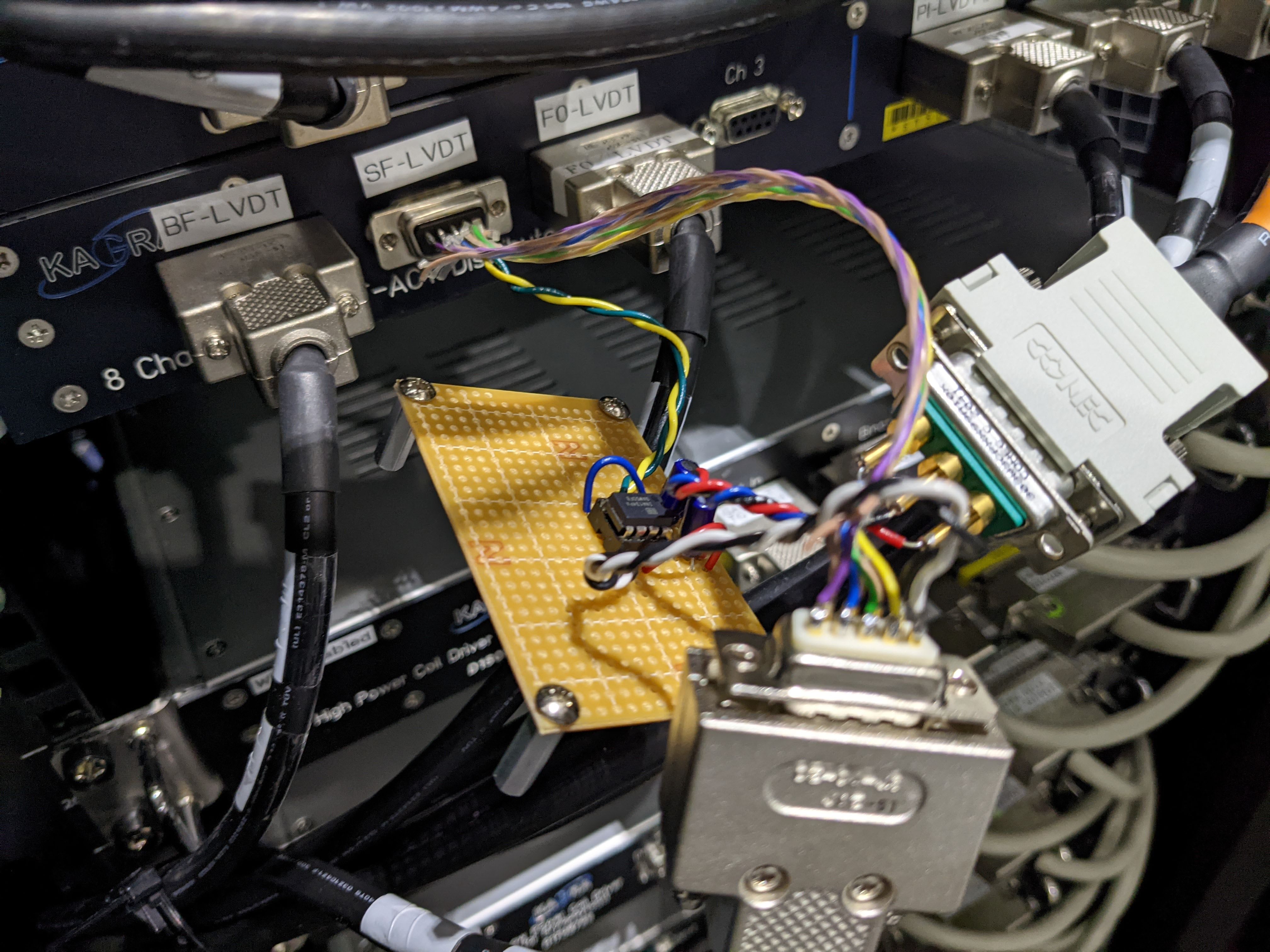Fabian, Terrence, Aso
Related to klog18953. This work was done on Nov. 19th (Fri).
While we were instigating the noise of the problematic BS SF(=F1) LVDT, we found a strange noise peak in the signal.
As you can see in the following video, a noise peak around 10Hz randomly moves around, say, between 8Hz and 30Hz.
Note that the video was sped up by 2.5 times.
The GAS filters were in a free-swinging state during the measurement.
We first suspected this may come from acoustic noises since the chamber is open. However, the fact that this peak only appears in the F1 LVDT makes this hypothesis less convincing.
You can also see that the noise level of the F1 LVDT is about 100 times larger than the other stages.
As Fabian explained in klog18953, we inserted a conversion circuit to swap the roles of the first and secondary coils. The circuit also converts the differential excitation into single-ended.
After this, the noise level of the F1 LVDT dropped to the same level as the other LVDTs (I forgot to save the data to show this). We also took the F1 GAS TF to see that the signal level was reduced only by a factor of 2-3 from the reference. This suggests that we have improved the signal-to-noise ratio by a factor of 30 to 50, which is good.
However, the wandering peak was still observed after the modification. The relative height of the peak to the noise floor remains the same, roughly 3 to 4 times larger than the floor.
Currently, a suspect is the voltage fluctuation of the vacuum chamber because we know that one end of the primary coil is connected to the chamber.
We should take a correlation between the vacuum chamber voltage and the SF LVDT signal.
The picture of the installed circuit is this. This is a bad way of installing a circuit. People should not imitate us.
We removed the circuit after the test. We asked Hirata-san to make appropriate holes on an aluminum box to put the circuit in the box.
The schematic of the circuit can be found here: https://gwdoc.icrr.u-tokyo.ac.jp/cgi-bin/private/DocDB/ShowDocument?docid=13455






